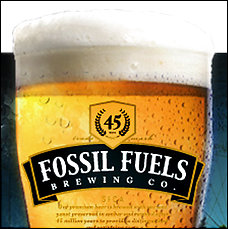washingtonpost.com
Raul Cano is the real-life "Jurassic Park" scientist. Yes, there is one.
A day before that movie opened in 1993, Cano announced that he had extracted DNA from an ancient Lebanese weevil entombed in amber, just as the fictional employees of InGen do with a mosquito to create their dino-amusement park. One newspaper account said the "achievement" refuted "the long-held view of many biologists that DNA of so great an age" couldn't be preserved.
But Cano was less interested in extinct reptiles than in Homo sapiens now roaming the earth. He next revivified ancient bacteria from the gut of an amber-encased bee and hoped to turn the strains into new antibiotics. That didn't work, and Cano, who has a doctorate in medical mycology, put his 1,200-specimen organism collection on the back shelf and returned to more fruitful microbial endeavors, like assessment of petroleum-degrading diversity in sand dunes and the bioinformatics of Lactobacillus acidophilus.
And then, last month, a breakthrough.
The product?
Beer.
"I was going through my collection, going, 'Gee whiz -- this is pretty nifty. Maybe we could use it to make beer,' " says Cano, 63 , now the director of the Environmental Biotechnology Institute at California Polytechnic State University in San Luis Obispo.
The result is Fossil Fuels Brewing Co., which ferments a yeast strain Cano found in a piece of Burmese amber dating from about 25 million to 45 million years ago. The company -- in which Cano is a partner, along with another scientist and a lawyer -- introduced its pale ale and German wheat beer with a party last month at one of the two Bay Area pubs where Fossil Fuels is made and served.
ad_icon
In April, at the World Beer Cup in San Diego, "we had one judge give us the highest marks, one just below and one who didn't like it," says Chip Lambert, 63, the company's other second microbiologist. "We learned that the issue was that in these competitions, you brew to match the traditional concept of the style, which these yeast just don't do."
William Brand, the Oakland Tribune beer critic, says the ancient yeast provides the wheat beer with a distinctively "clove-y" taste and a "weird spiciness at the finish." (The Washington Post Style section's summer beer critic pronounced it "smooth and spicy, excellent with chicken strips.")
Of the science behind the suds, Cano says, "It's just like the Rip Van Winkle effect. What they are doing, they are remaining dormant -- the bacteria or the yeast and generally spores of some sort -- and then when you take them out of the amber, they reawaken and continue to reproduce. So they are alive."
You ask, of course, why men able to imbue life would do so ultimately for booze. And Cano drifts back to his childhood in Havana, to the thick air before the revolution. "My dad used to drink," he recalls, a lilt in his voice. "I remember when I was 10, 12 years old, I used to walk over to where he had a mini glass of beer and talk him out of 10 cents, so I could go to a movie and have a hamburger."
At some point back then, Cano began sipping about two ounces a week (the volume would increase as his age did) of Hatuey, a famous Cuban brand that Hemingway mentions in "The Old Man and the Sea."
"It was really refreshing and tasty," Cano recalls with relish. "Drinking two ounces a week in the warmth and the humidity -- there's very little better than a cold beer. Nothing better than a cold beer."
The memory of that taste spurred him to create Fossil Fuels even before his medical venture foundered; he figured he could coax a compelling taste out of a strange, primordial ingredient. The first version was made by a home brewer in 1997 and served at both the cast party for "The Lost World" (the second "Jurassic Park" movie) and Cano's daughter's wedding. But without a business plan, the company died out.
In 2006, Cano revived his ancient yeast and his company, with the help of fellow biologist Lambert, whose duplication of Cano's experiments gained them widespread acceptance. Lambert had a refined taste for hooch from his days as a lab director in Saudi Arabia, where the prohibition against alcohol led him to smuggle and culture his own wine and beer yeasts.
It's been on tap for two years at Stumptown in Guerneville, Calif., where the brew pub's manager, Deanna DeLeon, called it "yummy," then added: "I don't know -- I'm not a big beer connoisseur."
"I was impressed with the flavor that the yeast brought out," said Orvil Kirby, a patron who tried the wheat beer at Kelley Bros. Brewery, where it's made. "My first taste of it, I thought they might've added some cloves to the beer."
If Fossil Fuels enters the mainstream market, which it hopes to do soon, the beers won't carry funky names like other microbrews. The scientists went that route back in '97 with Stegosaurus Stout and Jurassic Amber Ale.
ad_icon
But "one thing people are skeptical about," Lambert says, is whether they're "gonna grow long scales if they drink the beer. Tyrannosaurus Pale Ale -- that was so intimidating and so dangerous as far as marketing that we decided to get rid of any association with 'Jurassic Park.' "
So the real-life scientists are crafting a new legacy, in what may be the first "Jurassic Park" sequel you'll actually be able to swallow.


 Interesting,I really wonder how a delicate yeast could survive and be revived to brew, but I ain't that smart.
Interesting,I really wonder how a delicate yeast could survive and be revived to brew, but I ain't that smart.